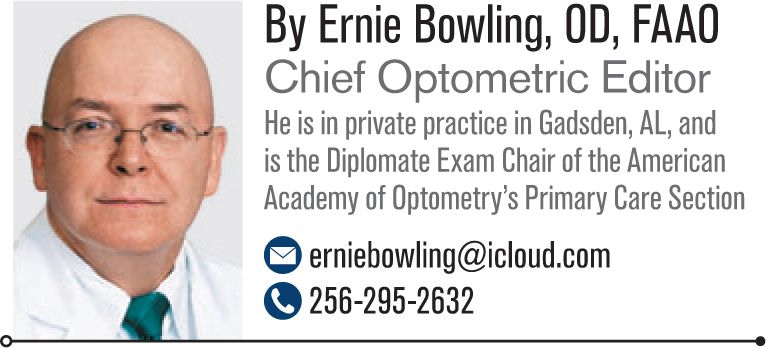Clinical laboratory testing in optometry: Next frontier
In this issue you'll find an article on clinical laboratory testing for optometry. It is my new passion. It’s something I do in my office on a daily basis, and I find it really helps me in my clinical decision-making.

In this issue you'll find an article on clinical laboratory testing for optometry. It is my new passion. It’s something I do in my office on a daily basis, and I find it really helps me in my clinical decision-making.
Think about it: you go to the local doc-in–the-box with a sore throat, and the techs there are going to do a series of lab tests (throat swabs, white blood cell count) before you ever get see the attending. The physician has all this diagnostic data available before ever walking into the exam room to see you.
More from Dr. Bowling: How point-of-care diagnostic lab tests help clinical decisions
In optometry, we currently have five tear tests at our disposal. Adding them to your diagnostic protocols will aid in patient care and keep us from flying by the seat of our pants, which is what we have always done in the past. These five tests are but the beginning. Point-of-care (POC) diagnostic testing in the future will ascertain any number of ocular pathologies. If there is an analyte that can be discerned, a test can be developed to identify it.
Optometry and ophthalmology have been slow to adopt clinical POC testing. Perhaps it is because these tests weren’t available during our time in optometry or med school. Or that this testing is relatively new and we are unfamiliar with them. Yet in current practice, these tests yield concrete, reliable, and repeatable results and can assist in your diagnostic decision-making. In short, it helps us be better doctors. These tests won't make you a lot of money, to be sure, but then again, that isn’t the point. The point is to help us make accurate clinical decisions.
I am in favor of anything that replaces my guesswork with concrete, objective data. Clinical POC testing is the next frontier in optometric practice.
More from Dr. Bowling: Farewell to Dr. Larry Alexander, my optometric hero
Newsletter
Want more insights like this? Subscribe to Optometry Times and get clinical pearls and practice tips delivered straight to your inbox.